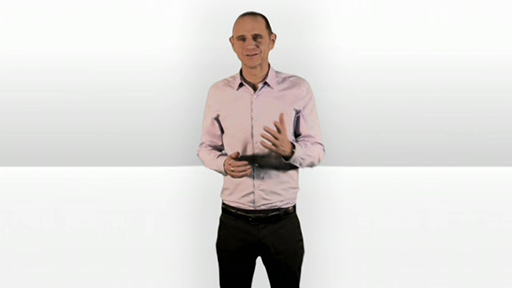3 How do organisations add value?
Activity 1: Adding value
Watch Video 1 below, in which Evan Davis looks at the modern value chain, which he suggests has three stages.

Transcript: Video 1 The modern value chain
The clip is taken from the 2011 BBC television series Made in Britain in which Evan Davis asks how Britain can sustain itself in the global economy; and in particular if it is right for Britain to concentrate on excelling in the knowledge economy (commercial awareness is of course vital for nation states as well as for companies).
The three stages mentioned in the video are:
- creativity: coming up with a new product or process
- manufacturing: churning out the product (this is the tangible part of the chain but it adds less value than you might think)
- marketing, branding and advertising.
Having watched the video, now consider your own position within your organisation.
- Does your work fit neatly and exclusively into one of these three stages?
- In terms of a value chain (such as those described in the video) are you closest to the ‘inputs’ or the ‘outputs’ of your organisation? (Roles close to the input end might be procurement, enquiries, goods received, etc., those nearer to the output end might be invoicing, delivery, after-sales services, etc.).
- We talk of a value ‘chain’ – but to what extent does a linear chain (receiving work and passing it on, with added value) represent your work situation? Are there loops of feedback or more complicated connections between what you do and how others in the organisation operate?
Feedback
In the video it is clear that value relates to being competitive, and being competitive means being able to do things differently or better than others. At the level of the organisation, this means being more efficient (e.g. doing more with less, being quicker or reducing the number of repetitions, reducing costs) or more effective (e.g. doing things that are more relevant, have greater priority or are more useful or desirable). When we understand what our objectives are in these terms, it makes it easier to suggest how to improve practices to eliminate waste, and enhance each individual’s contribution to the total value. Crucially, it allows us to compare the value added by techniques we apply to those used in other organisations.
But how does this talk of value fit with our central concern: developing better commercial awareness? Why is identifying value valuable in that context? Why is it valuable to members across an organisation?
Recognising the value you yourself bring and contribute to the organisation:
- helps to align your day-to-day activities, short-term and ‘local’ objectives (e.g. what you want your team to be achieving this week) with the longer-term, ‘global’ aims and objectives of the organisation (e.g. what it is your organisation is here to do; its mission and purpose)
- provides enhanced motivation as you see your own effort and achievement manifested in the total achievement of that organisation
- provides enhanced motivation as you understand how your internal customers and other close colleagues perceive your worth and the array of benefits you bring to them
- can assist in raising your profile through your organisation as you realise (and communicate) the value you add to those more distant colleagues in your organisation (including leadership teams)
- by widening your appreciation of your own capabilities (and potential capabilities), puts you in a stronger position to seize opportunities to develop yourself, your team and your organisation.
Recognising the value others across the organisation contribute:
- widens horizons – it breaks you out of the dreaded ‘silo mentality’ which can cause teams and individuals to stagnate
- allows you to be more agile, responding to the needs of internal customers better and working smarter with those colleagues on whose work your own is dependent
- expands your reach into diverse sources of potentially useful information and human resource
- enables initiatives to be taken – having a better grasp of what others require and what situations demand, you are able to offer more and discover areas where you and your team can influence, serve and be recognised for taking the initiative
- makes for a stronger sense of organisation and shared purpose, which in turn helps to harmonise working and also provides the basis for resilience and better resolution when there is conflict or discord between individuals or teams.
